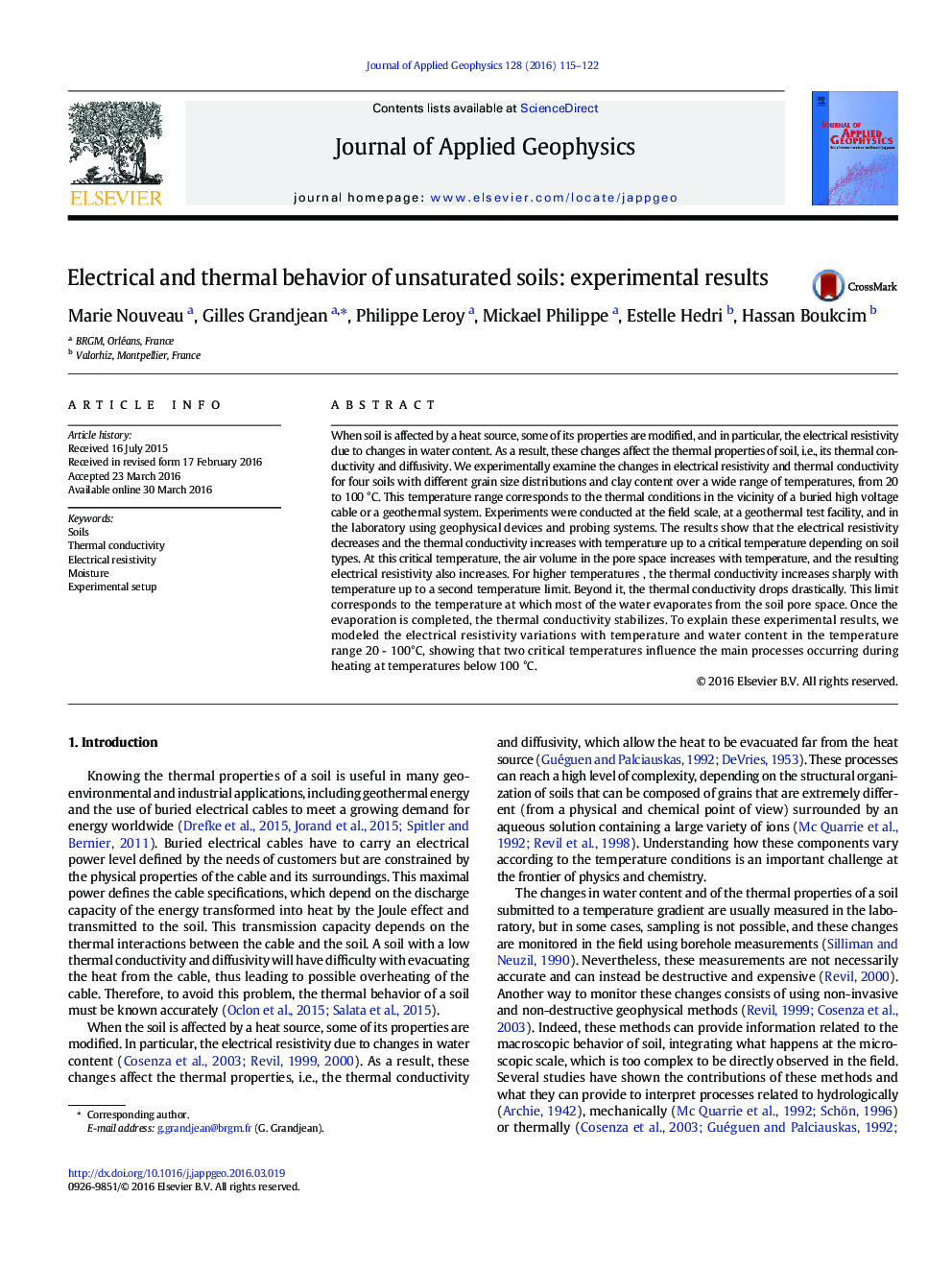| کد مقاله | کد نشریه | سال انتشار | مقاله انگلیسی | نسخه تمام متن |
|---|---|---|---|---|
| 4739791 | 1641123 | 2016 | 8 صفحه PDF | دانلود رایگان |
• We experiment changes in electrical and thermal conductivity for four common soils
• Electrical resistivity decreases and thermal conductivity increases with temperature
• This phenomena is observed up to a critical temperature for each soil
• This limit corresponds to water evaporation from the soil pore space
When soil is affected by a heat source, some of its properties are modified, and in particular, the electrical resistivity due to changes in water content. As a result, these changes affect the thermal properties of soil, i.e., its thermal conductivity and diffusivity. We experimentally examine the changes in electrical resistivity and thermal conductivity for four soils with different grain size distributions and clay content over a wide range of temperatures, from 20 to 100 °C. This temperature range corresponds to the thermal conditions in the vicinity of a buried high voltage cable or a geothermal system. Experiments were conducted at the field scale, at a geothermal test facility, and in the laboratory using geophysical devices and probing systems. The results show that the electrical resistivity decreases and the thermal conductivity increases with temperature up to a critical temperature depending on soil types. At this critical temperature, the air volume in the pore space increases with temperature, and the resulting electrical resistivity also increases. For higher temperatures , the thermal conductivity increases sharply with temperature up to a second temperature limit. Beyond it, the thermal conductivity drops drastically. This limit corresponds to the temperature at which most of the water evaporates from the soil pore space. Once the evaporation is completed, the thermal conductivity stabilizes. To explain these experimental results, we modeled the electrical resistivity variations with temperature and water content in the temperature range 20 - 100°C, showing that two critical temperatures influence the main processes occurring during heating at temperatures below 100 °C.
Journal: Journal of Applied Geophysics - Volume 128, May 2016, Pages 115–122
